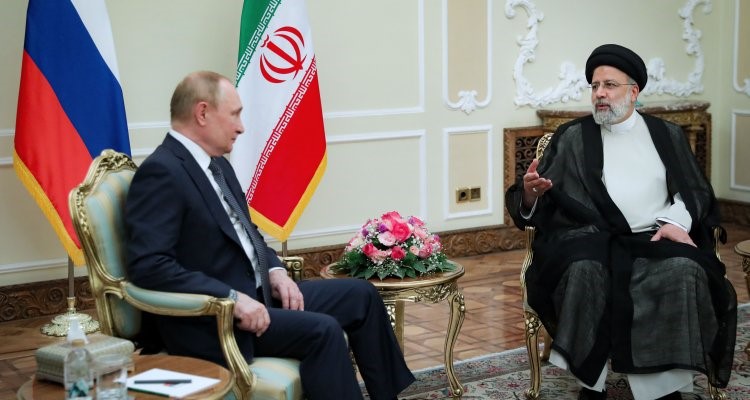For decades the Iranian regime’s belligerent behavior has elicited the concern of western world leaders. This summer is no different. As Iran moves closer to official completion of its nuclear weapons program its military remains active on other fronts, too. US intelligence is reporting that Tehran is prepping to deliver potentially hundreds of Iranian unmanned combat aerial vehicles (UCAVs) to Moscow. Two weeks ago, Iran showcased the Shahed-191 and Shahed-129 drones during a visit from a Russian delegation. Sine Ozkarasahin, of the Jamestown Foundation, noted that Radio Farda is reporting that “Commercial satellite imagery allegedly confirmed that a delegation from the Kremlin had visited Kashan Air Base at least twice in the past month.”
Disruption in the critical global supply chain inflated the cost to produce Russian drones domestically. According to the Russian publication Lenta, cost increases range from 30 percent to 200 percent. In June it reported that “The shortage of goods arose after the Chinese DJI, which occupies 90 percent of the market of ‘consumer drones,’ stopped supplying to Russia.” Putin’s drones have proved weak against Western UCAVs. The drones have been particularly vulnerable against man-portable air-defense systems (MANPADS), including Stingers and LLM Martlets, as well as optically guided Martlets and Starstreaks, according to Ozkarasahin.
He added that although Iranian Foreign Minister Hossein Amir-Abdollahian reassured his Ukrainian counterpart to the contrary in a recent phone call, the Kremlin might indeed find what it needs from its non-NATO ally’s combat solutions. The Iranian drones can serve as an intelligence platform, conduct surveillance and reconnaissance (IRS) and an asset to strike at high-value Ukrainian targets. It closes a gap in the Russian’s strike inventory with a precision-tool that is cost-effective and a force multiplier.
“Iranian drones can also overwhelm sensor networks, blurring the enemy’s line of sight. Yet, the West’s heavy counter-drone measures (supplemented by high-end, sophisticated systems, such as Starlink) coupled with the lack of deployment of some of Russia’s most promising electronic warfare (EW) capabilities, including the Krasukha-4, to suppress Ukrainian air operations render Iranian drones’ chances of making a grand impact relatively slim,” says Ozkarasahin.
Tehran recognizes that its UCAV capabilities will boost Moscow’s ability to deliver precision-guided strikes during a period when Russia is suffering from a munition’s shortage. Ozkarasahin says that while this is an improvement, Iran’s drones are a mismatch as they lack the desired interoperability. They cannot be efficiently integrated into Russian networks and datalinks without some form of database synchronization in place, nor can the Iranian drones operate as mobile base stations.
The drone sale will put Tehran in a difficult position as it appears likely that uniformed Iranian soldiers would need to be on the ground to operate the UCAVs, placing Iran in the middle of Putin’s “special military operation.” At that point Iran would become a direct party to the war in Ukraine. In the past it formed military-strategic relationships and supplied rogue states and non-state allies with its indigenously-built, drones that are part of the Islamic Revolutionary Guard Corps (IRGC) program.
“Acting as the long-arm of Iran’s strategic outreach, IRGC members provided on-site, yearslong training and real-time support to Lebanese Hezbollah and Shia groups in Iraq concerning Iranian drone CONOPS” says Ozkarasahin. At the same time Iran is claiming to be neutral in the conflict. That stance will be difficult to maintain once its soldiers are in the field given the transparency provided by sophisticated open-source intelligence (OSINT) techniques. This is more that a simple defense transaction, according to analysts.
Obstacles still exist before any sale of Iran’s Shahad-191, Shahed-129, or other kamikaze drones is finalized. Ozkarasahin suggests that the difficulty of integrating systems without Iranian boots on the ground, and the potential political sensitivities still could prove too much and prevent any notion in Tehran of actively supporting Putin’s war in Ukraine. Other military analysts purport that the deal already is inked and ready to go. If Iran’s drones are used in the war in Ukraine, it will represent a widening of the conflict and present new challenges for the West in dealing with Iran at a sensitive time in Tehran’s nuclear development program.
Daria Novak served in the U.S. State Dept.
Photo: Iran President Raisi meets with Putin, July 20 (Iran Govt. )
